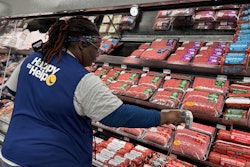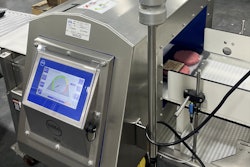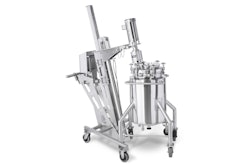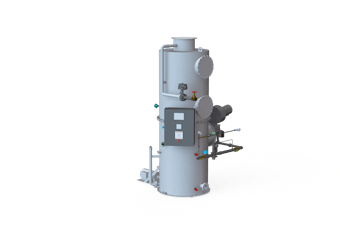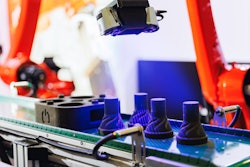Bill Blank, Poka's Product Marketing Manager, brings a wealth of experience to Poka, where he began by driving successful onsite implementations as part of the Professional Services team.
Fumbling the baton during the changeover in an Olympic relay race can cost the gold. Minutes matter in today’s busy and complex manufacturing environments. Lost time during a work shift is never good. Amplifying losses due to poor shift handovers is worse. Information gaps can lead to potential safety hazards, quality issues, disrupted continuity, and increased downtime.
A digital shift handover report as part of a connected worker solution creates a continuous information thread to take the friction out of creating and consuming shift reports and closes the gap between reporting and taking action.
When you consider the constant 24/7 nature of certain operations with different teams and leaders, achieving consistency can be a challenge, and it’s why effectively using a digital shift handover is essential for a seamless transition between shifts.
Shift reports are part of a continuous factory information thread
There’s no need to wait for the end of a shift. Ideally, workers start creating their shift report the moment they begin working. As the shift progresses, they can add noteworthy items as they occur. Photos or videos, with brief text recorded in the moment make things clearer and more accurate without relying on memory after eight or more hours on the factory floor.
Digital shift reports, when compared to paper or meetings, provide company-wide benefits. Dynamically communicated information arms employees with essential knowledge that helps guide teams effectively throughout the remainder of the shift, leading to optimized operations, increased safety, and better outcomes. To achieve this, it's vital to exchange all correct and relevant information during the digital shift report. The necessary information will be different for each factory, but the need to communicate this information clearly and dynamically is ever-present. This is where connected worker solutions step in!
It’s all in the details: The critical information thread for effective knowledge transfer
The exact contents vary per factory, however, a shift report typically covers all or some of the following elements:
- General information on the shift with highlights and/or lowlights explained;
- SHE (safety, health, and environment) information such as any issues encountered or observed;
- KPIs, such as OEE, throughput, yield, or other factory specific measures;
- Equipment changes such as settings concerning speed, centerlines etc;
- Issues or problems encountered during the shift, what actions were taken, and who was assigned responsibility to take corrective action.
Cross-shift product changeovers revamped
One great example of using a digital shift handover occurs when there is a product changeover that crosses to a following shift.
I’ve been in plants where the incoming shift virtually starts over on the processes required to set up a new product on the line because it’s unclear where the prior shift left off. Of course, there were some handoff data points passed along, but the details were not always clear.
A digital report, completed in the moment, with photos or videos clarifies where the early shift left off and therefore where the work needs to be picked up. Couple the digital shift report with links to changeover work instructions and checklists and the value of having it all in one place is clear.
The KPIs that matter most = a win-win for shift workers and management
To have a genuine and effective impact, it’s important to focus on the areas and key KPIs that matter the most—employee safety, efficiency, and quality.
Shift reports can drastically improve safety in the workplace. A good shift report will give granular detail for the incoming team to ensure they are fully informed about safety observations from a previous shift, potential hazards, and accidents to prevent any further incidents from occurring. Safety is improved as specific KPIs are monitored to ensure the workplace is safe for operation. For example, it will log the number of near misses, incidents, accidents, time lost, and track safety compliance.
When it comes to efficiency on the manufacturing shop floor, shift reports help increase engagement and team building by connecting operators across shifts. This enhanced knowledge helps to improve cross-shift relationships and provide performance levelling across shifts. Optimized OEE and better production continuity monitors paper waste, while digital forms reduce duplication of efforts and ensure faster issue responses, enabling companies to improve efficiency and reduce downtime.
In the manufacturing industry, ensuring consistent quality is always critical. However, incomplete or inaccurate handovers can result in losses tied to quality issues. For example, the incoming team may not be aware of raw material issues or important equipment adjustments, leading to potential defects or variations in the final output. Poor product quality can lead to customer complaints, returns, and company reputation damage—therefore it’s where improved quality and efficiency metrics across the factory floor, such as First Pass Yield (FPY), material waste, defects/rejects, and cost of quality can help manufacturers keep quality high.
Reducing duplications and tracking critical tasks just got easier with digital processes
The use of electronic forms and checklists replaces the traditional pen-and-paper approach during shift handovers. Digital shift reports improve accessibility and readability, while links to in-depth details and added multimedia content ensure
clarity. A pre-built shift handover template can improve speed to create, enabling manufacturers to capture and monitor data in real-time, increase visibility into production with actionable insights, boost workforce productivity by going paperless, and reduce production inconsistencies through standard work. Score forms automatically speed up analysis and responses, while scheduled checklists support on-time completions.
Taking it a step further, issue and visual management capabilities help make it faster and easier to identify deviations and solve problems. Built-in issue and task creation with automatic notifications ensure visibility and rapid response to issues raised in shift handovers. The issue board can be filtered to aggregate issues for appropriate visibility to provide actionable insights to continually improve cross shift performance. It can also contribute to more engaged workers that will spur a culture of continuous improvement.
Pay it forward: Enhanced learning and development through the shift report
Digital shift reports have a critical role. By integrating them with an advanced connected worker solution, manufacturers can reap benefits that go even further, including conditional logic and other mechanisms to shorten completion, knowledge management, and factory feed. Multi-media Work Instructions on the shift handover process allow workers to access the instruction when needed and remind themselves about the key details and information required in the report. With factory-wide communication features like Factory Feed, manufacturers can post links to the shift report and solicit feedback from the team on lessons learned, issues identified, and other important plant matters. Employees themselves also have access to historical and archived data and analytics.
In turn, these reports play a central role in enabling better skills management. Companies can make use of specialized shift handover training, complete with exams and assessments, that can be used to track the knowledge and competency of your team and enhance the shift handover process. This training will unlock new employee competencies and skills in a more organic, efficient, and effective way. Given that a massive 90% of learning and development comes from experiential and social learning, a connected worker app to facilitate training means that each employee can be consistently trained in role-specific skills on a shift-by-shift basis.
Shift workers are only as good as their handovers: The tech making digital handovers a reality is here
Shift handovers can be the weakest link in any manufacturing process. The importance of digital shift reports should not be overlooked—it can be the make or break for improving the efficiency, safety, and quality of manufacturing operations. In today’s highly digitized manufacturing landscape and with powerful connected workforce solutions, there is no excuse for ineffective shift handover operations.
But with the use of electronic forms, checklists, and management capabilities, manufacturers are helping to enhance team engagement and drive continuous improvement. Optimized, transparent, and easily digestible shift reports will not only boost operational productivity but also help create a culture of safety and excellence that benefits both employees and the bottom line.









